
[Images by BUILD LLC]
There are a number of different architectural strategies quietly at work on the Magnolia House + Guesthouse. The main house is designed to stay low to the ground, accentuating the long horizontal lines of the architecture and creating dramatic cantilevers where the grade drops off. Because the Guesthouse sits further up the hill on a steady slope, its pavilion-like design becomes the focal point of the interior court. A third structure, the less obvious hot tub shelter, is designed to blend in with the backdrop and open to the view. These three structures include four different roof assemblies, and while all of them are designed to appear as flat roofs, none of them are truly flat. Today’s post takes a closer look at the technical assemblies, some of the structural engineering, and the aesthetic considerations of these four roof types.
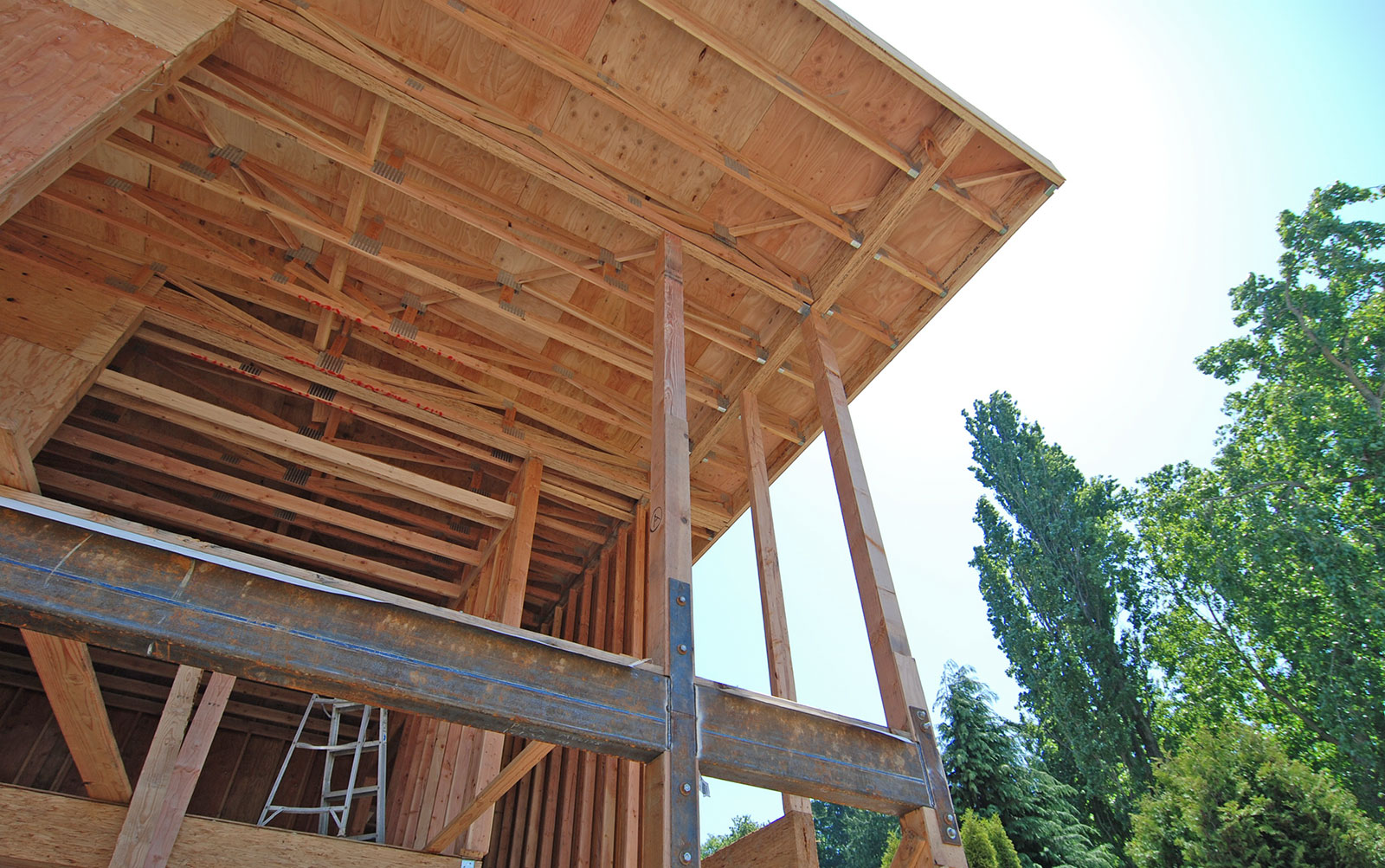
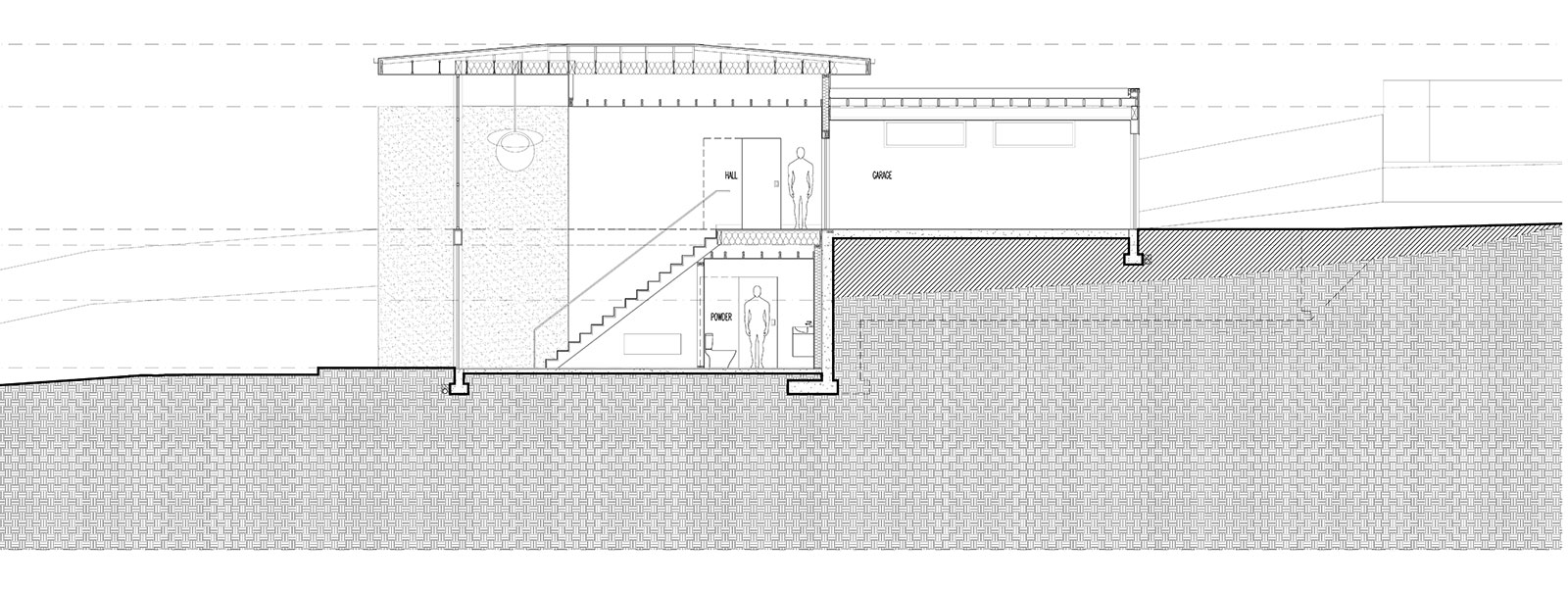
GUESTHOUSE
We’ll start with the Guesthouse, as it provides the basic architectural DNA for the additional roof structures. The Guesthouse structure brings two roof types together and allows each to have very different functions. The more visible west facing portion of the Guesthouse uses prefabricated trusses to form a shallow hip roof. These trusses are filled with R-49 batt insulation and overhang the side walls by 2’-6” and extend 5’-6” at the front. The standing seam metal roof slopes 1” vertical to 12” horizontal which achieves proper drainage at this condition while keeping the slope low enough as to not be noticeable from down below. The soffits are finished with a painted MDO panels to complement the interior ceilings, and the assembly gives the envelope the clean look of a perfectly horizontal plane. The hip roof necessitates gutters on all four sides and the downspout is discretely located in the shadows on the north elevation.
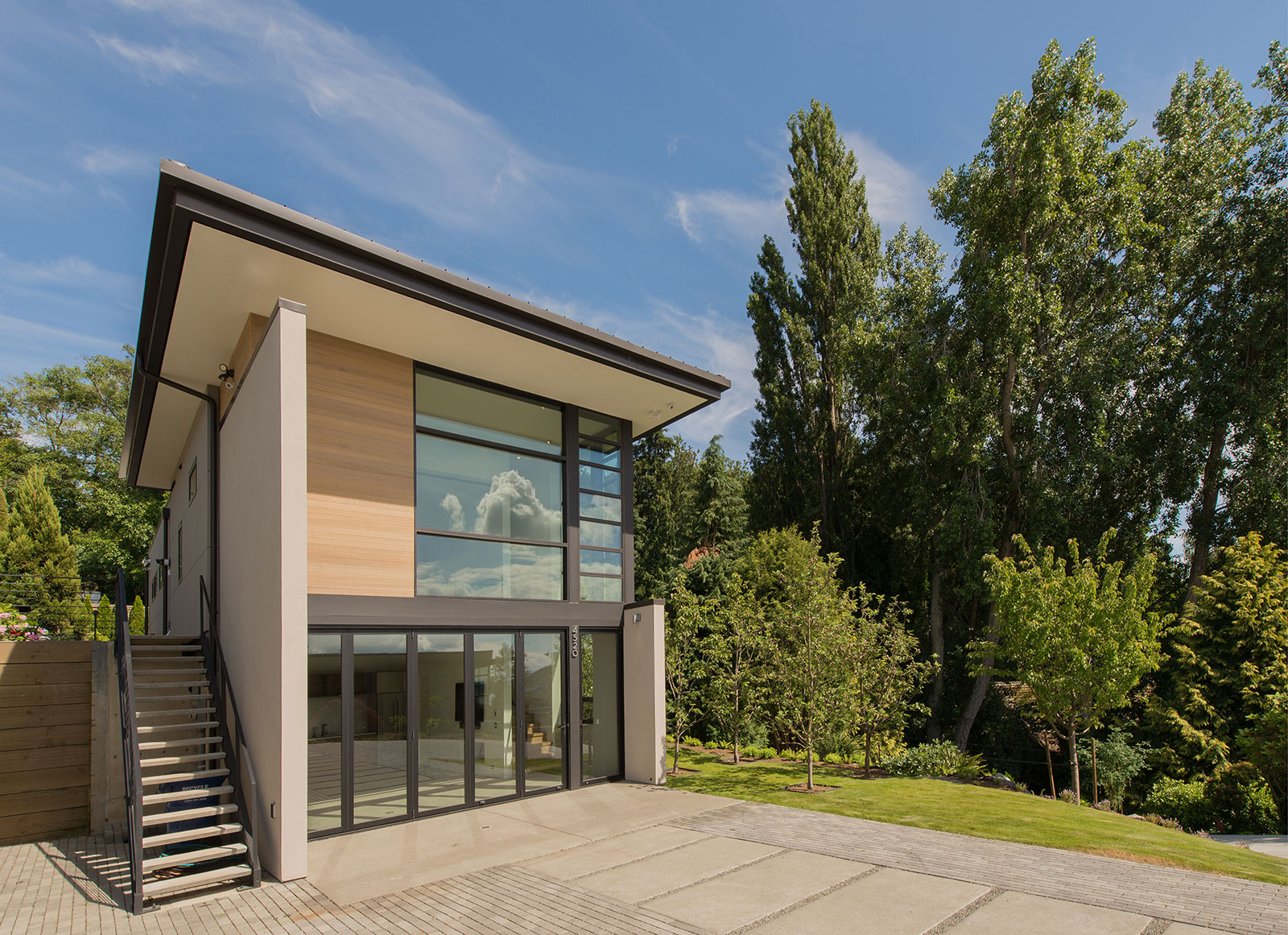
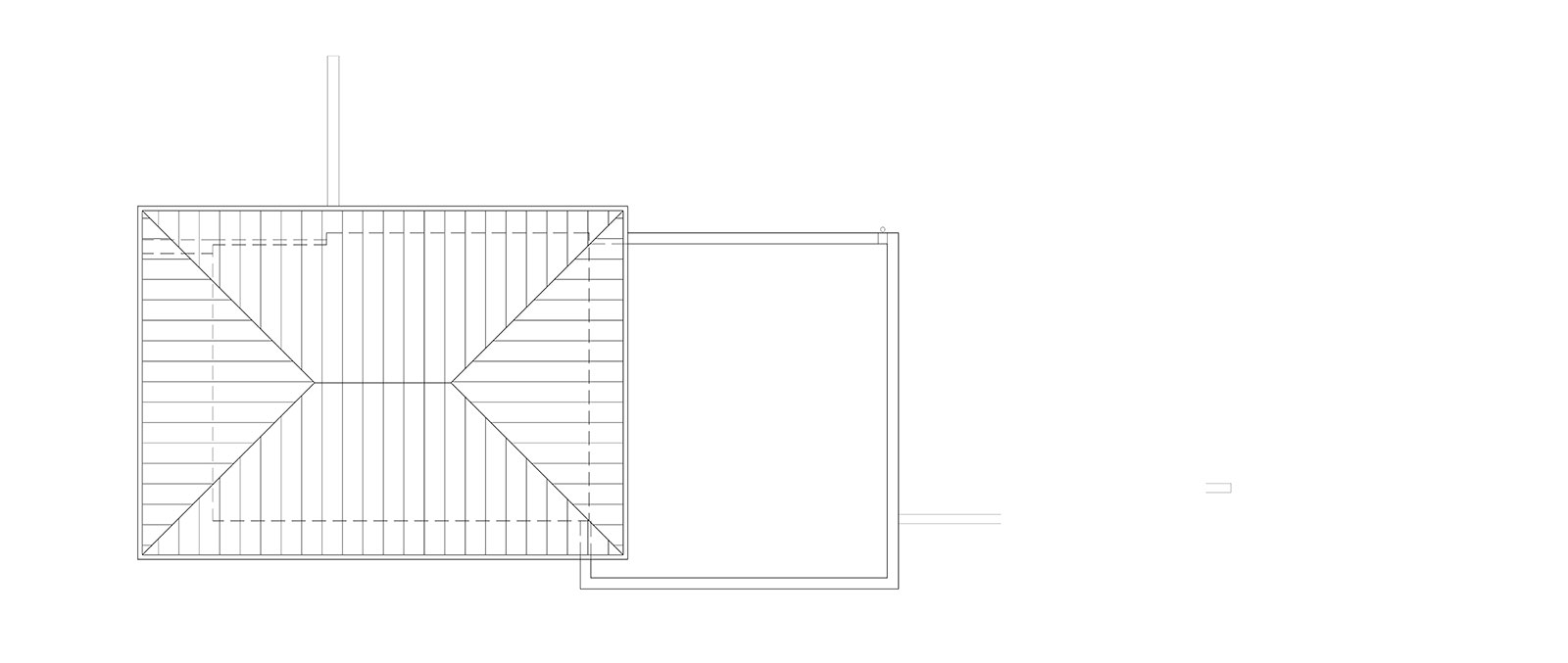
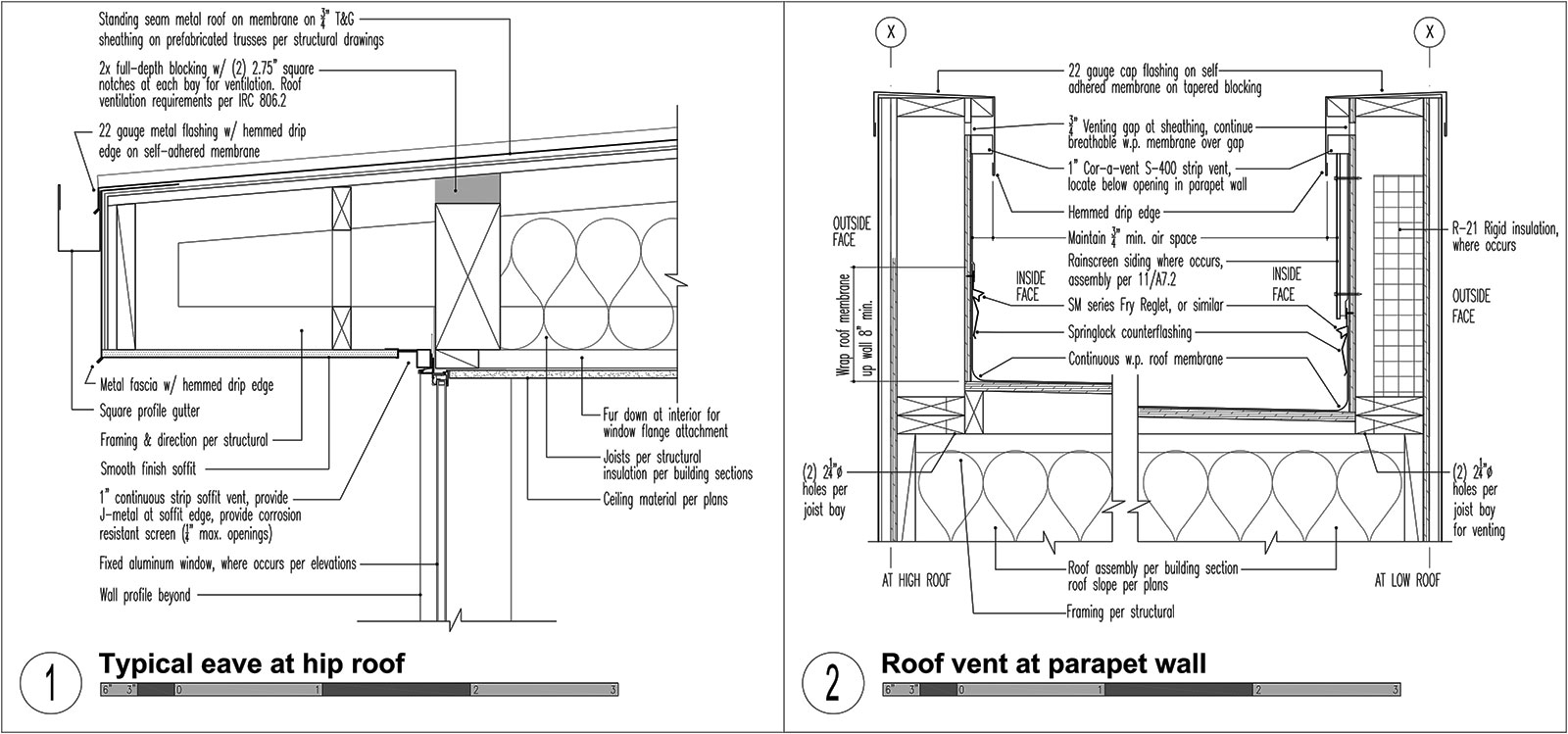
The back portion of the Guesthouse serves as a garage, accessed from a back road to the property. The garage volume is kept simple but elegant, using rainscreen panels which extend up to become the roof parapet. A single-ply membrane is installed over ¾” sheathing over sleepers sloped ¼” vertical to 12” horizontal for drainage over TJI joists with R-49 batt insulation. This roof slopes to scuppers and downspouts located at the north elevation of the structure. While very different in assembly, the garage roof portion also achieves the look of a perfectly horizontal line from the ground.
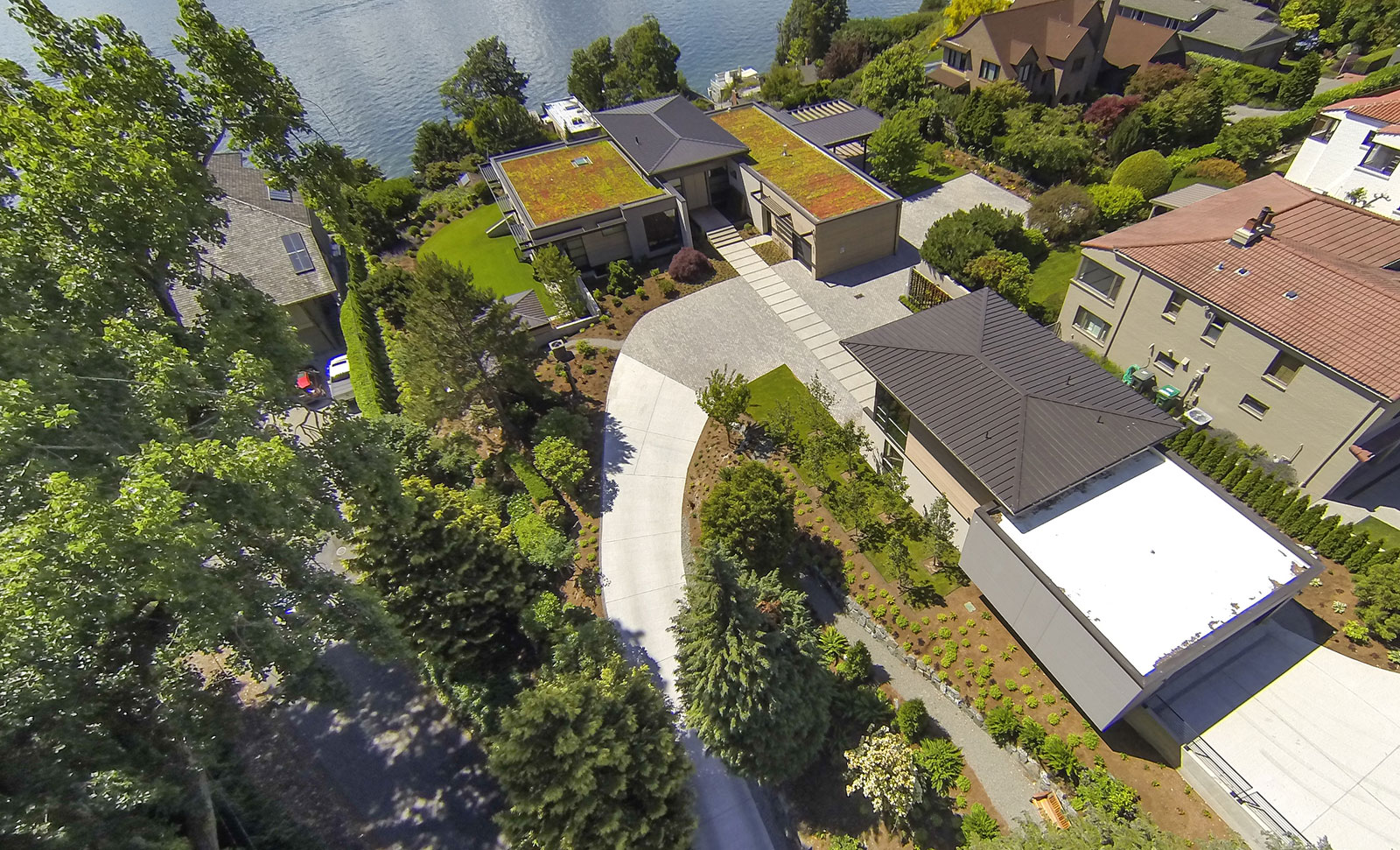
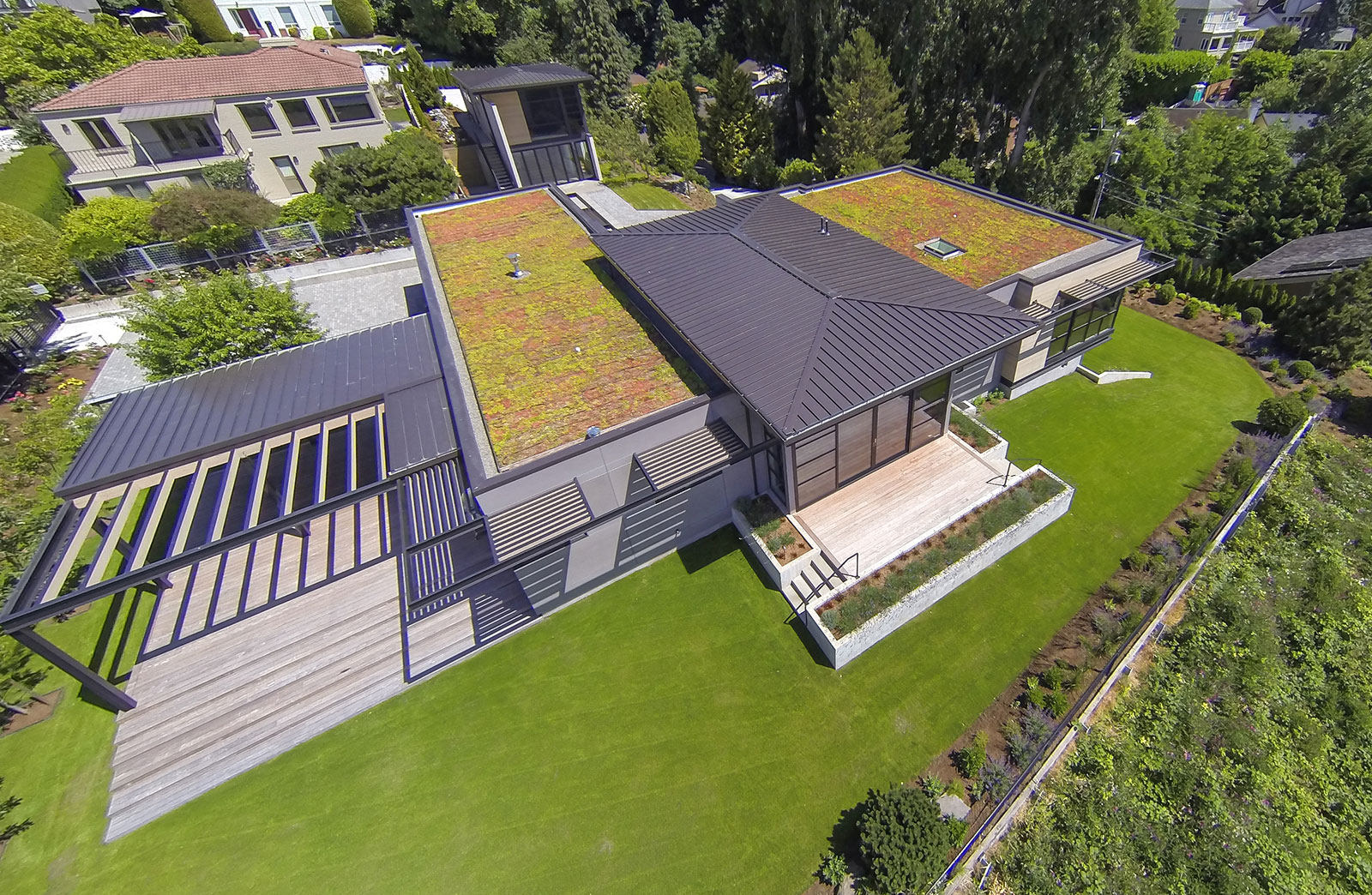
[Aerial Photography by Savatgy]
Similar to the Guesthouse, the Main House uses a standing seam metal hip roof assembly with prefabricated trusses at the center of the massing. This allows the entry and dining areas to become the tallest and most celebrated spaces of the interior, while outside, the long cantilever roof form provides a visual hierarchy to the envelope of the residence. This roof extends out 3’-0” at each side and just over 6’-0” at the front and back, lending a dramatic feel to the west facing elevation of the residence.
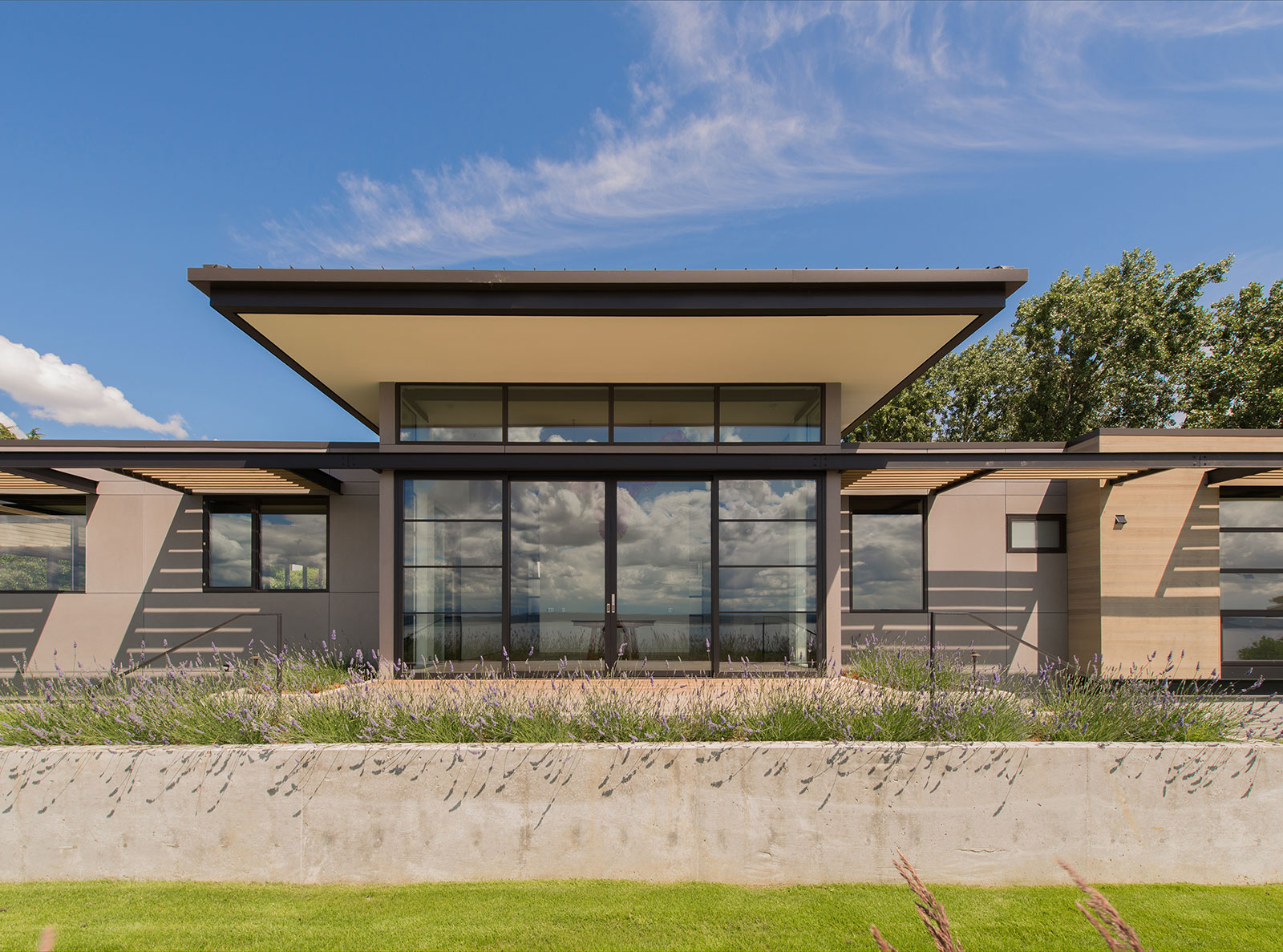
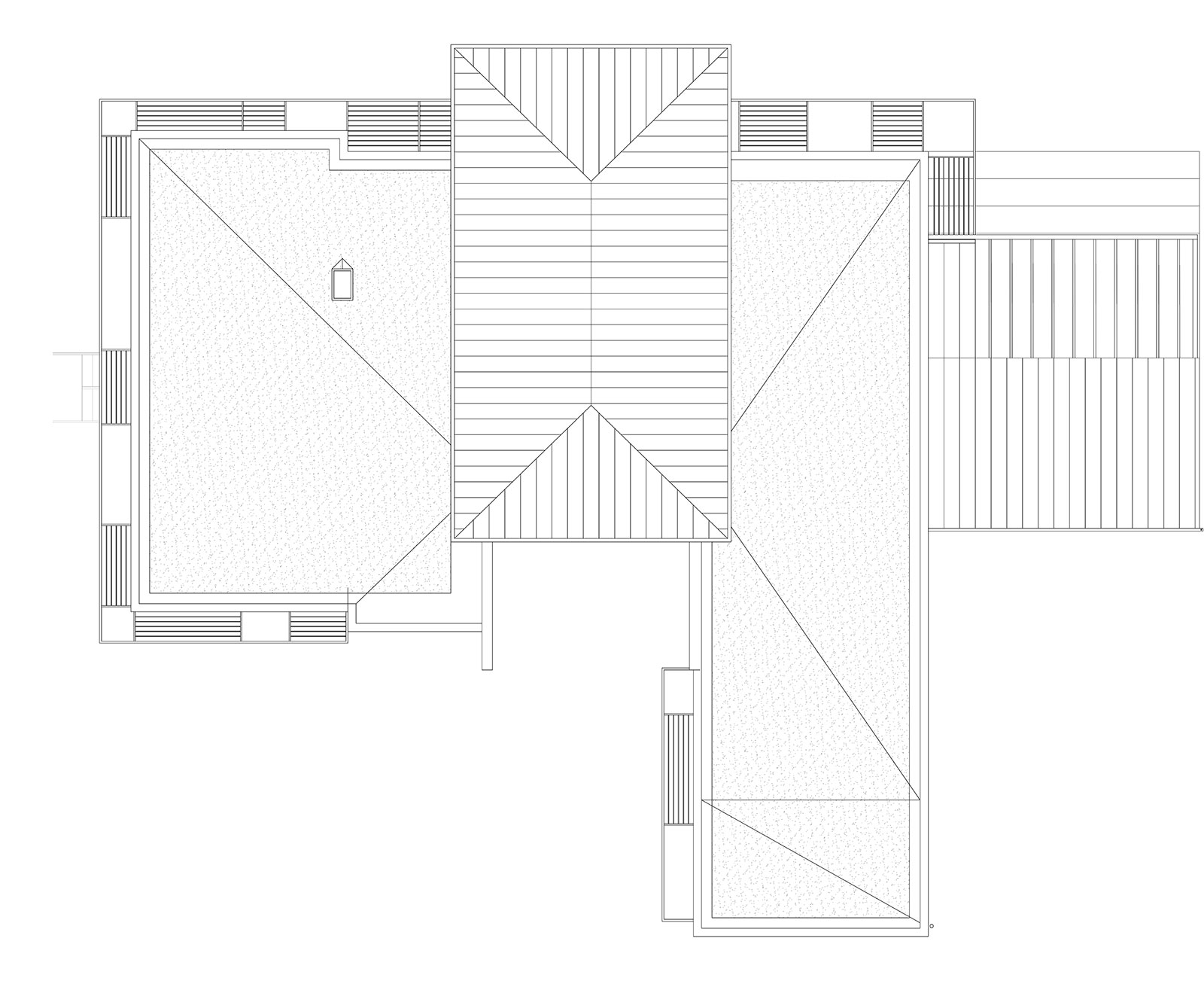
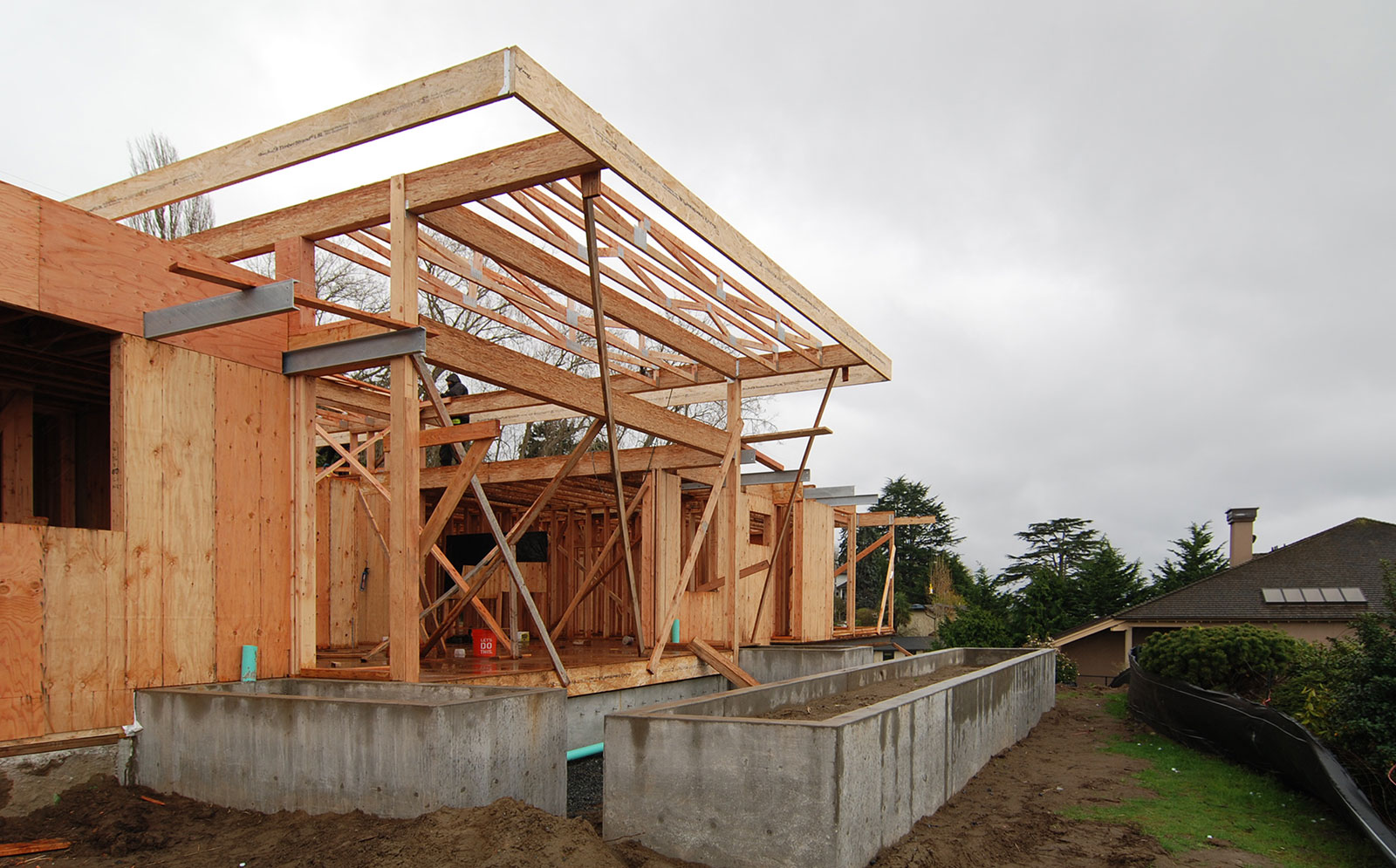

The roof assemblies at the wings on either side use parapet walls and a single-ply membrane sloped ¼” vertical to 12” horizontal, just like at the Guesthouse, only the assemblies here are equipped with green roofs. Pre-seeded, green roof rolls were installed at each side of the house which collect rain water and slow the discharge of storm water to the city sewer system. At nearly 2,500 square feet of area, these green roofs played a significant role in satisfying the drainage requirements for the permitting of the project and they make for an aesthetically pleasing gesture to the neighborhood above.
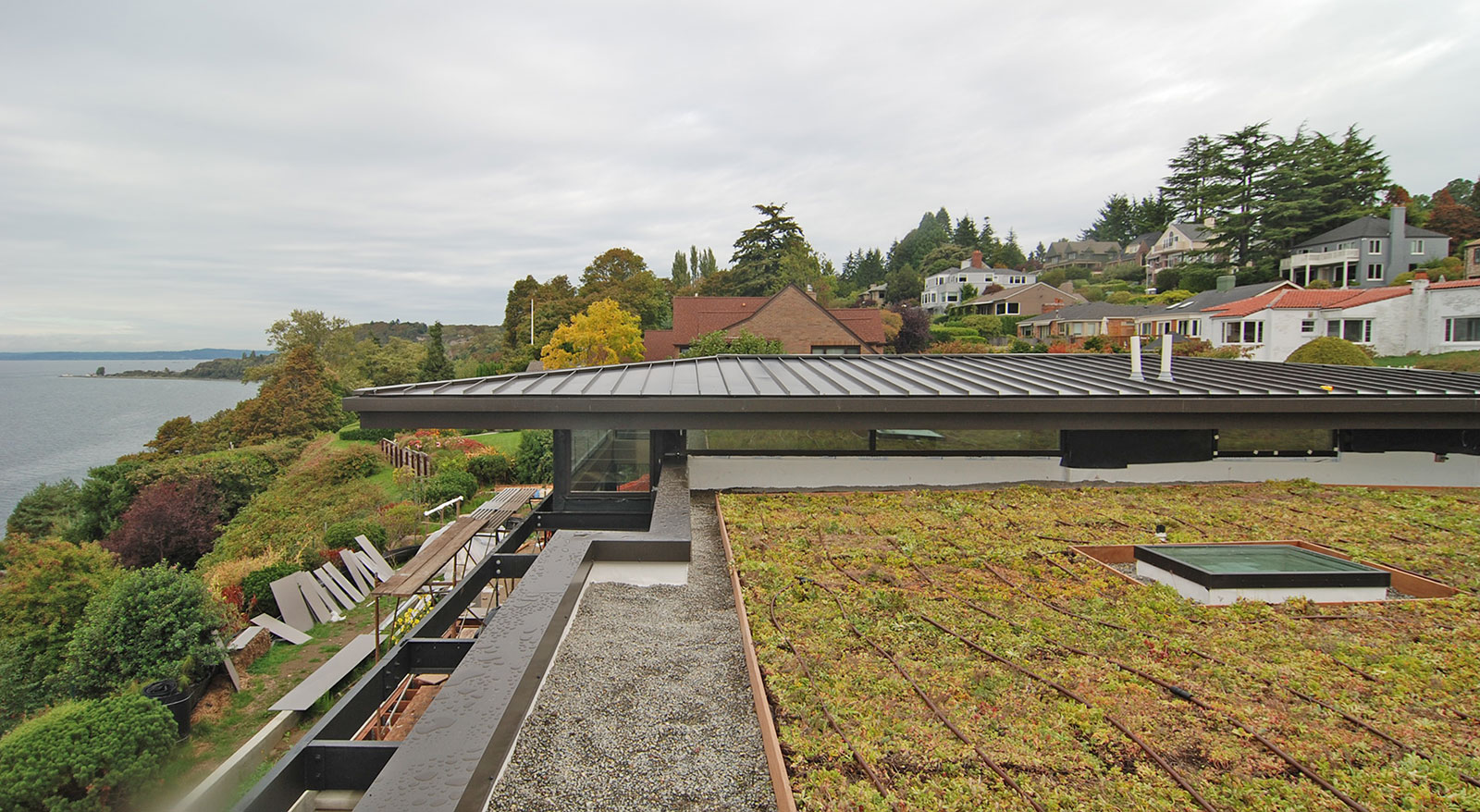
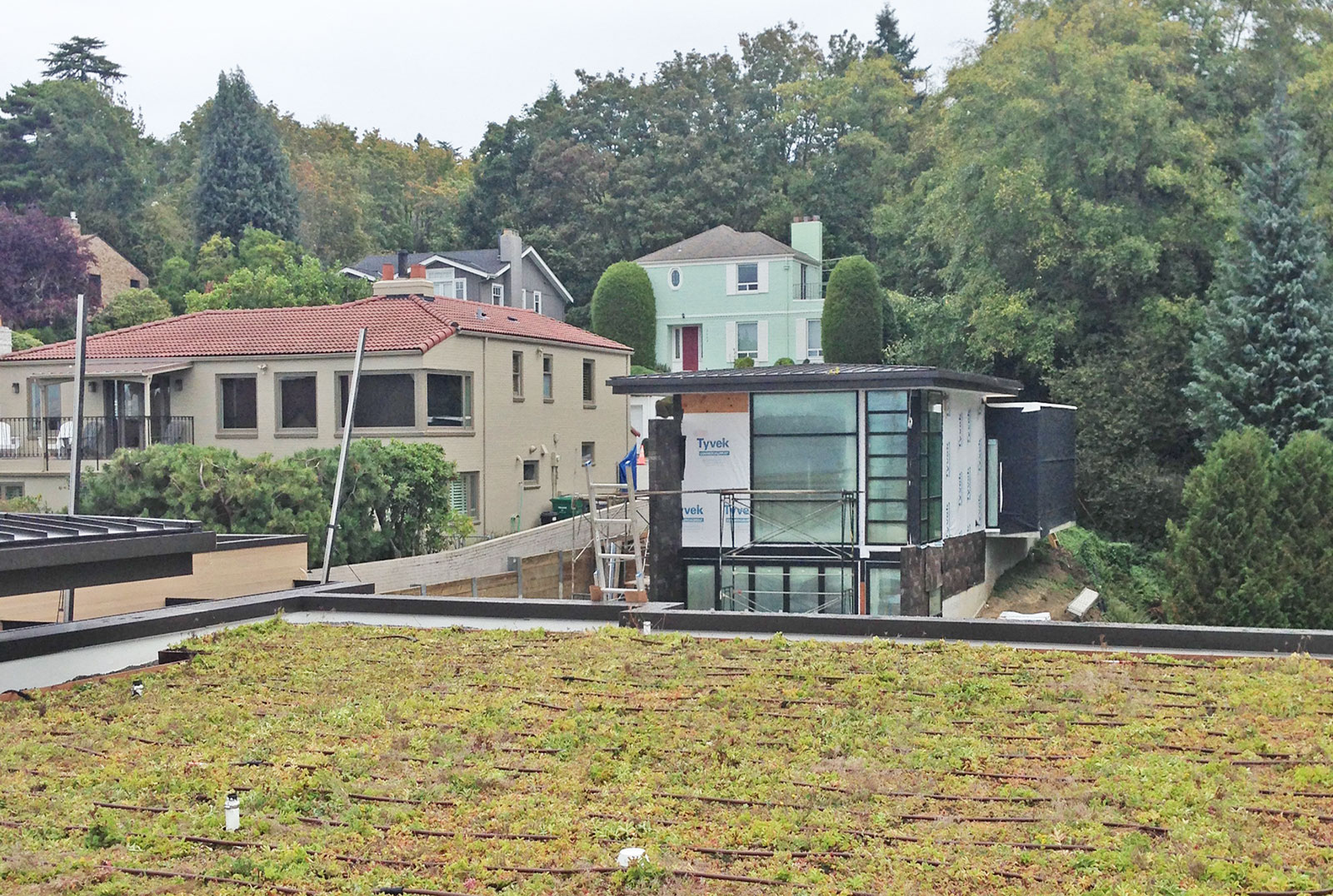
The added weight of the soil and fluctuating rain water at the green roofs require stronger TJI joists, however the entire assembly fits into a tidy profile and reinforces the low, horizontal aesthetic of the architecture.
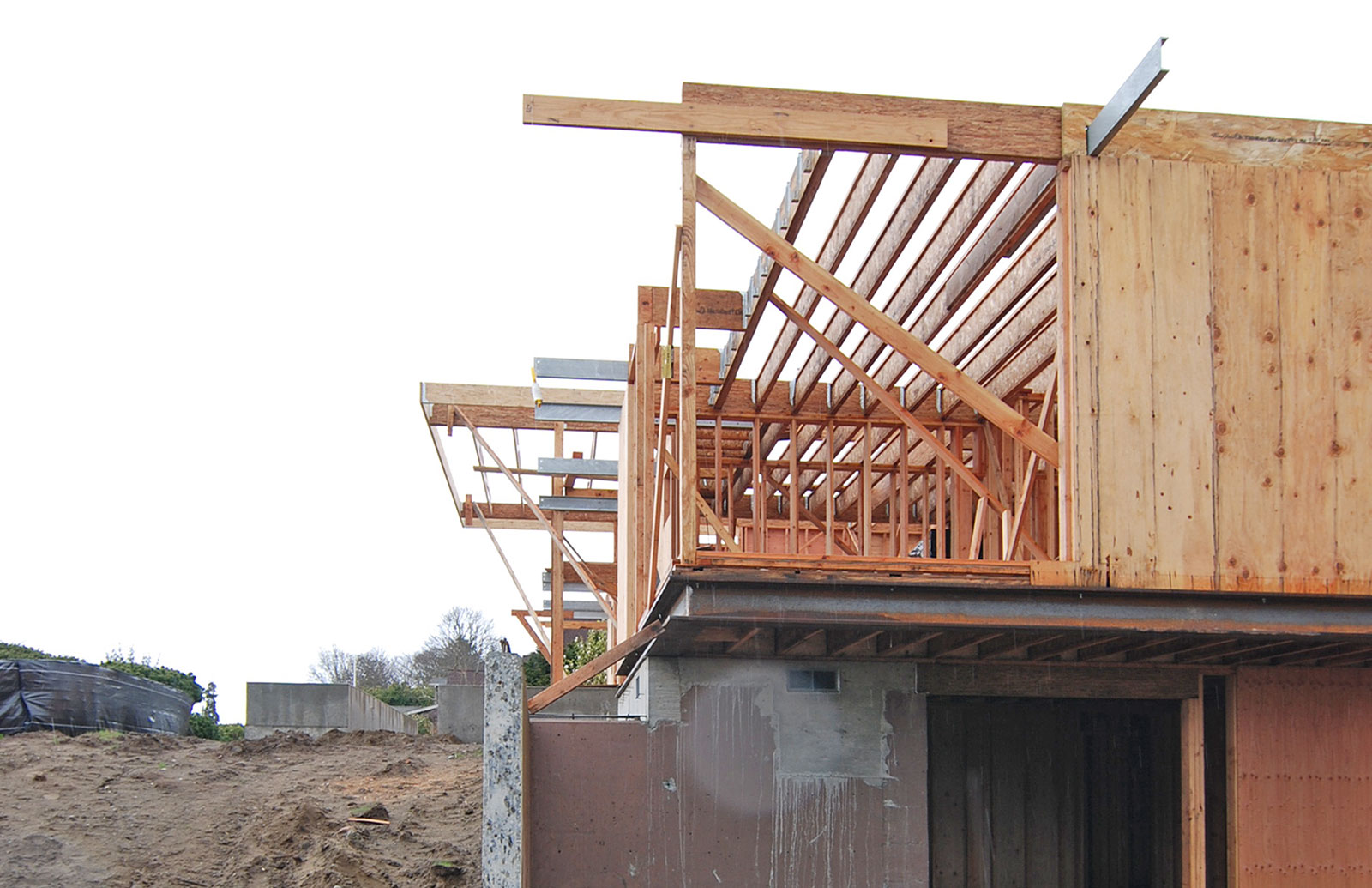
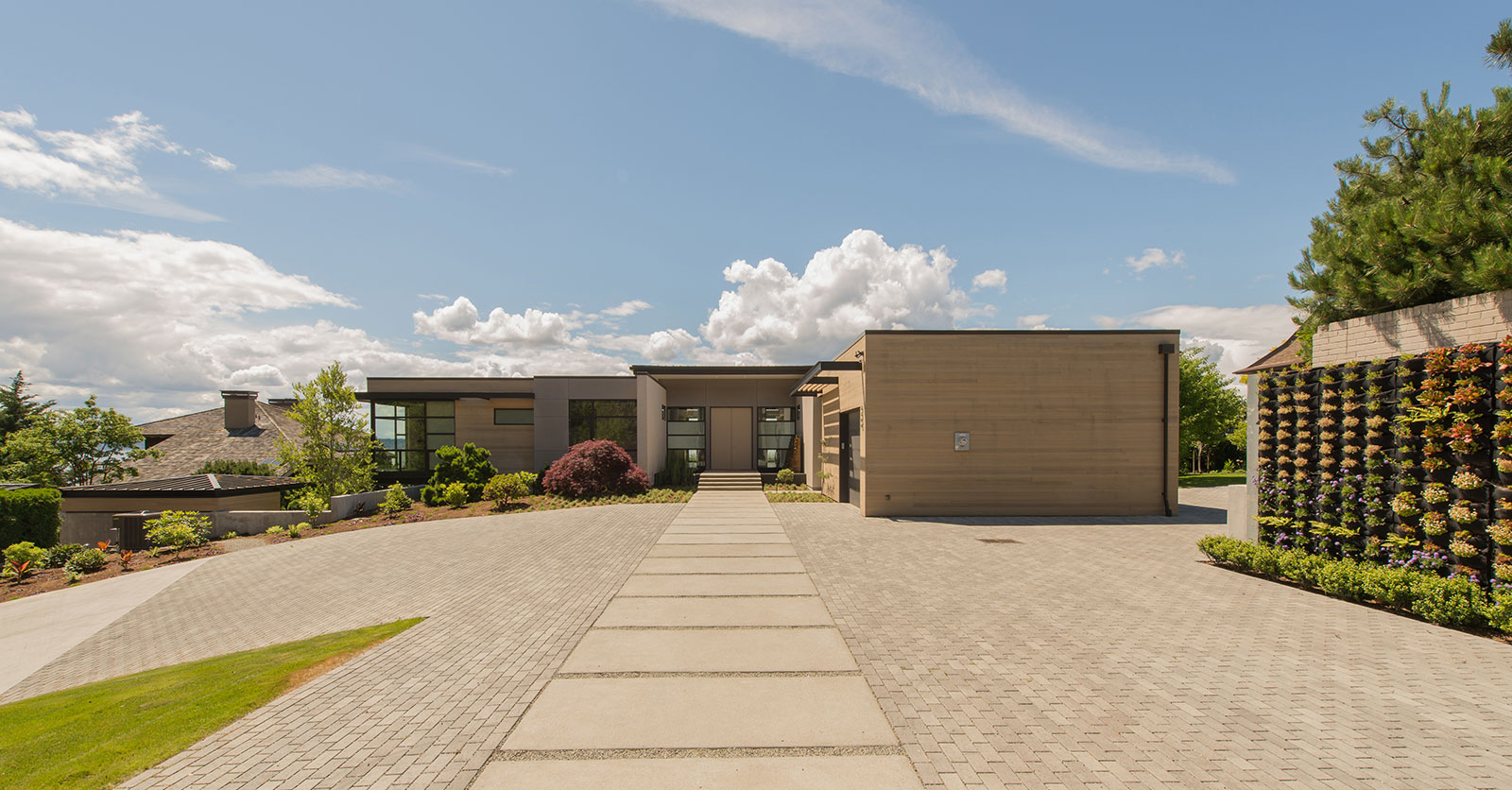
At the north side of the Main House is an outdoor, partially covered, partially open terrace. The covered portion uses a standing seam metal shed roof sloped 1” vertical to 12” horizontal which drains to a continuous gutter. The 2x cedar joists are left exposed to visually warm up the space and are attached to the cedar beams with CJT series concealed Simpson connectors. Identical joists extend out into the open portion of the terrace allowing for natural light to filter into the space. This combination of open and covered terrace allows more versatility in the use of the space and the area becomes an outdoor room of the residence.
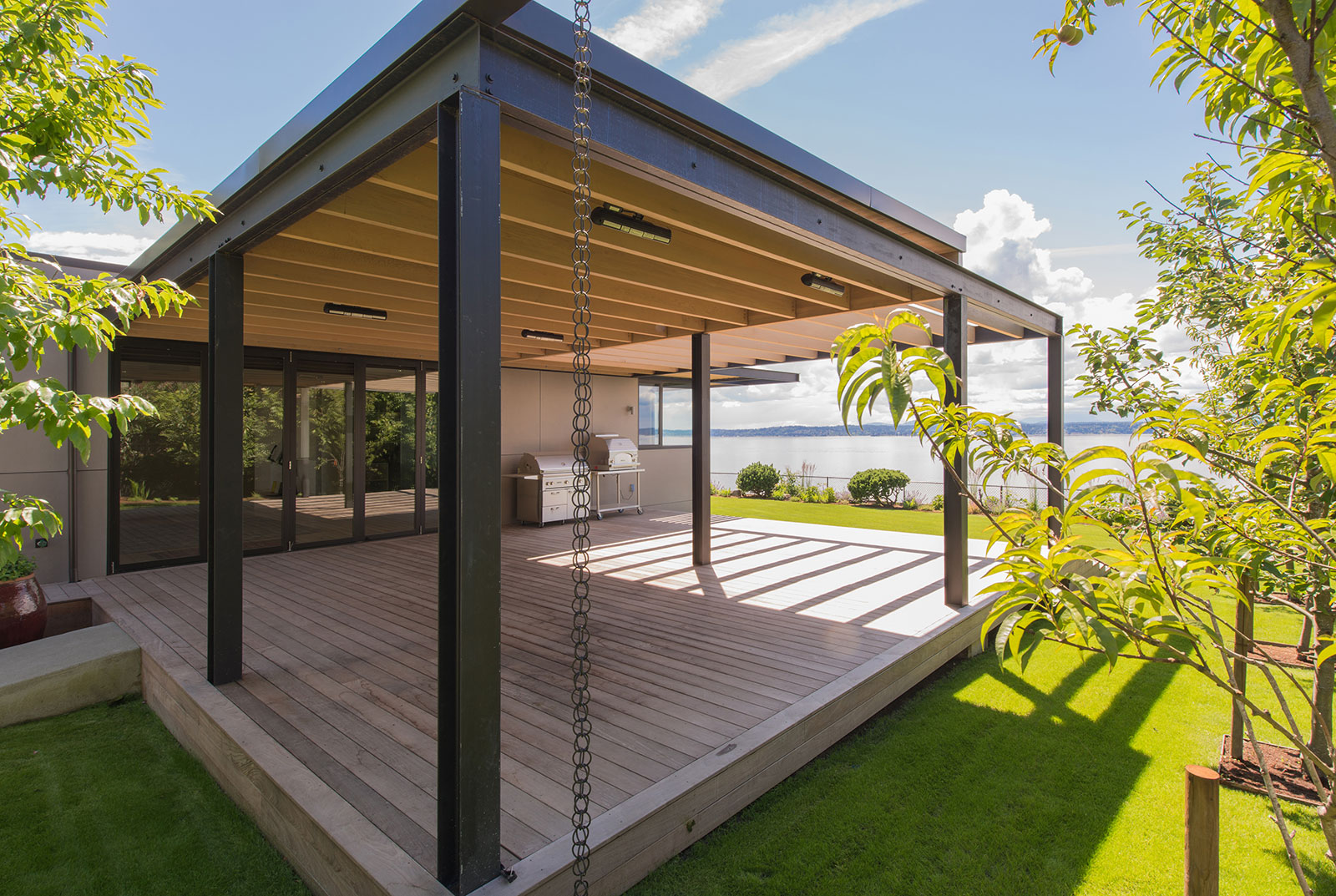
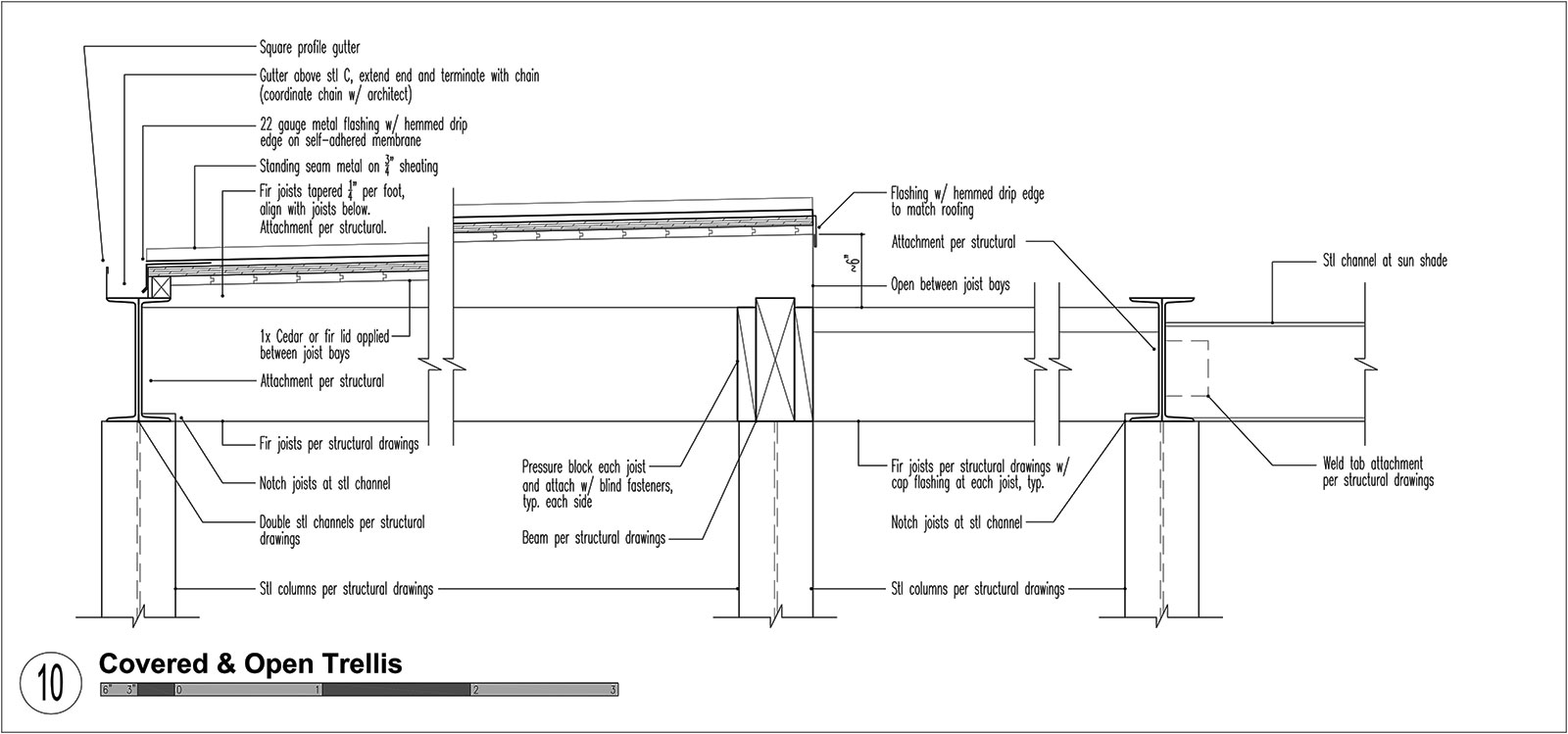
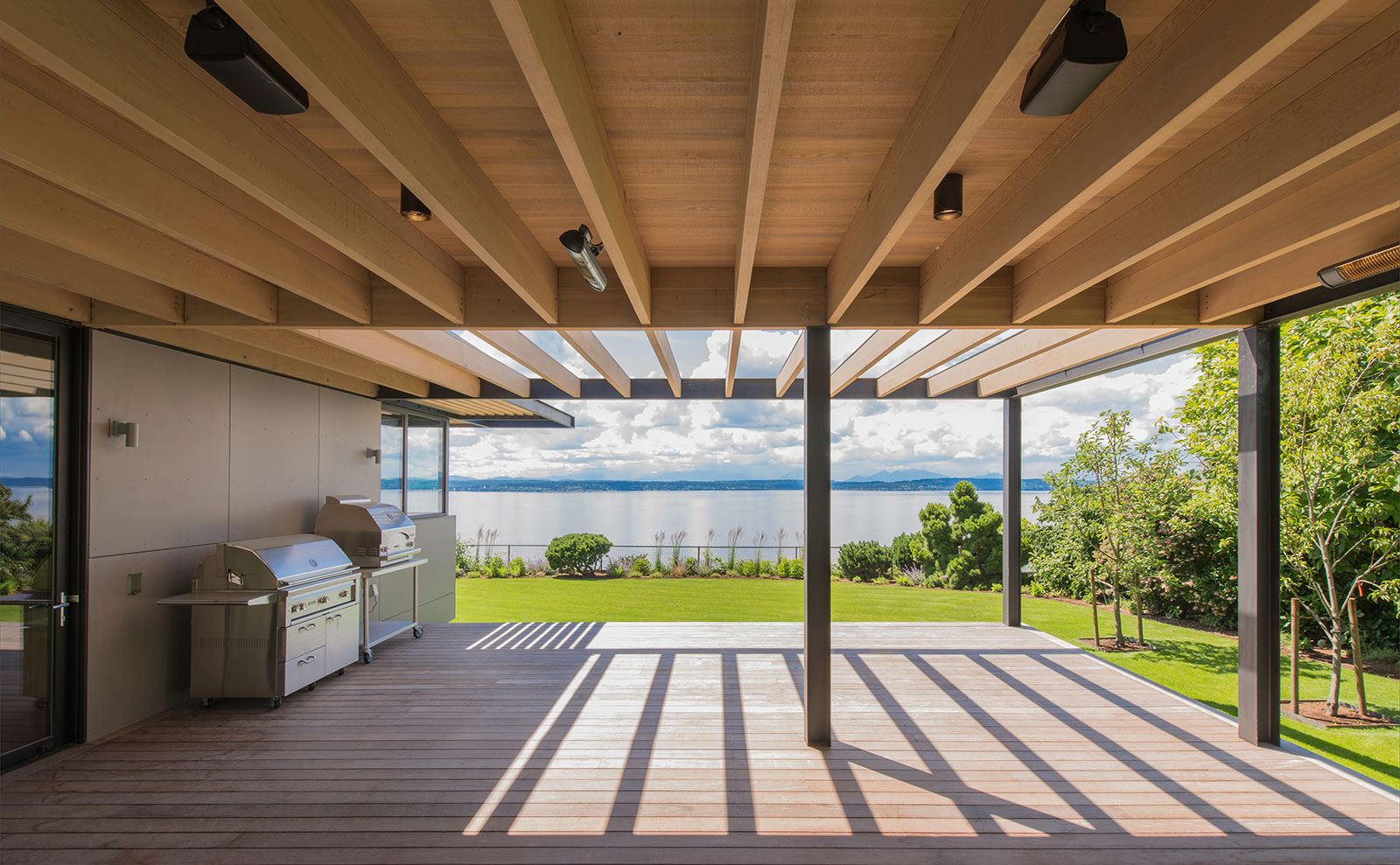
Last but not least, the small hot tub shelter tucks into a lower yard below the main floor of the house and visually blends with a similar use of materials and roofing. It’s compact standing seam metal hip roof keeps in conformance with the geometries of the site and sheet drains to each side. Cantilevered steel channels match the cantilevers at the Main House and allow the shelter to open up to the expansive view beyond.
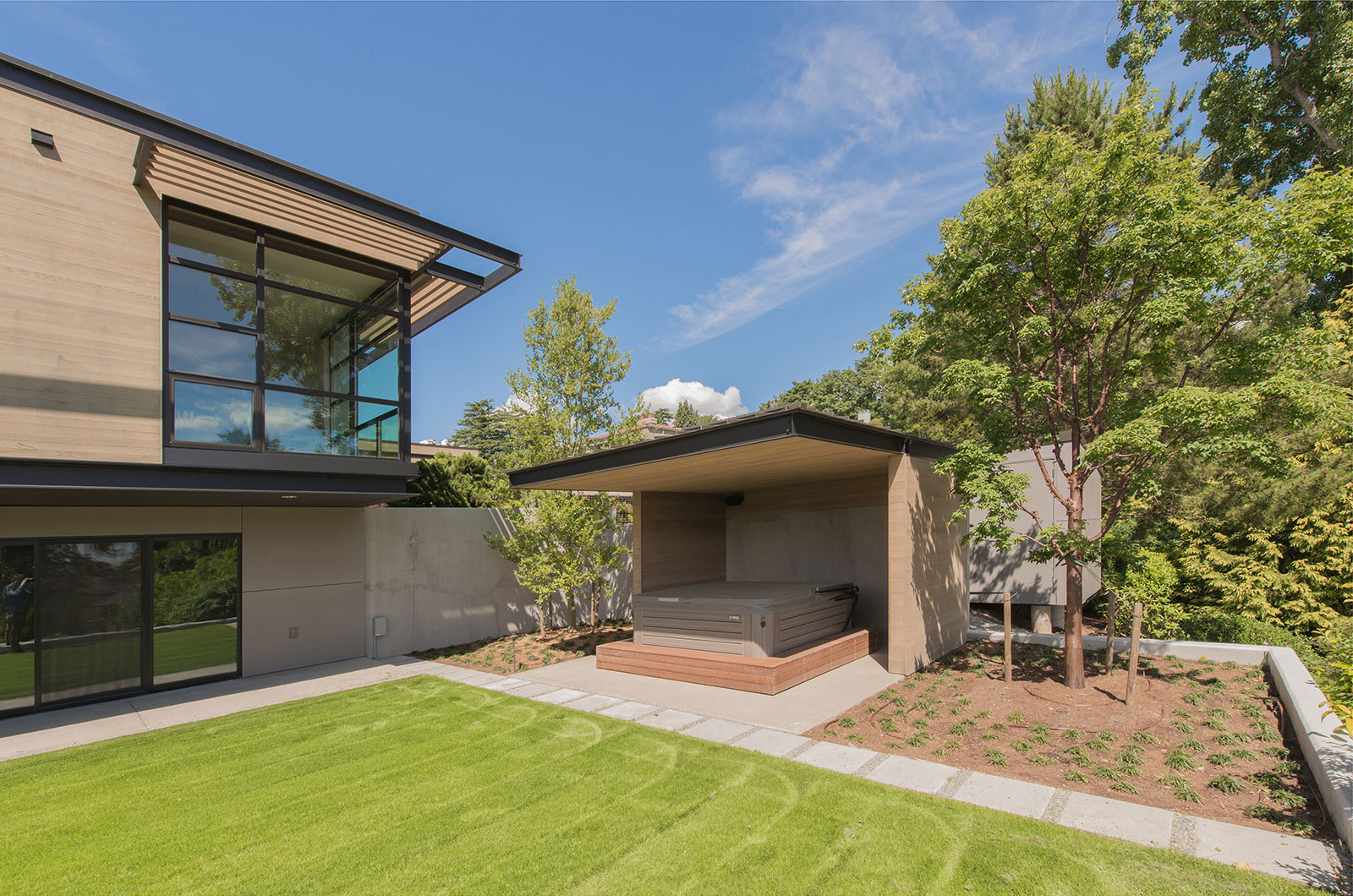
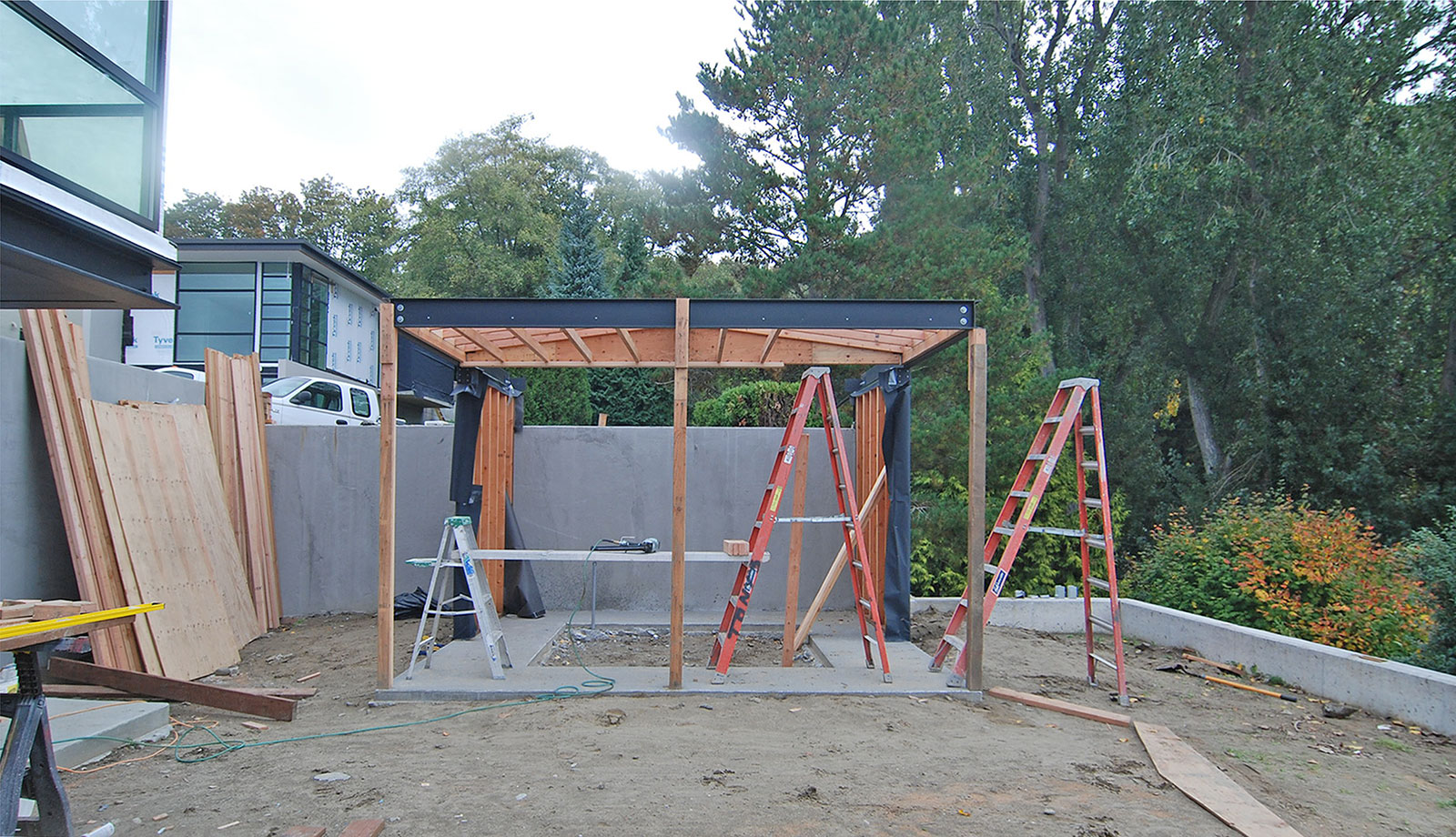
The balance between function and aesthetics of these four roof types proved successful on the Magnolia House + Guesthouse, and these assemblies have been added to our kit of parts for use on future projects.
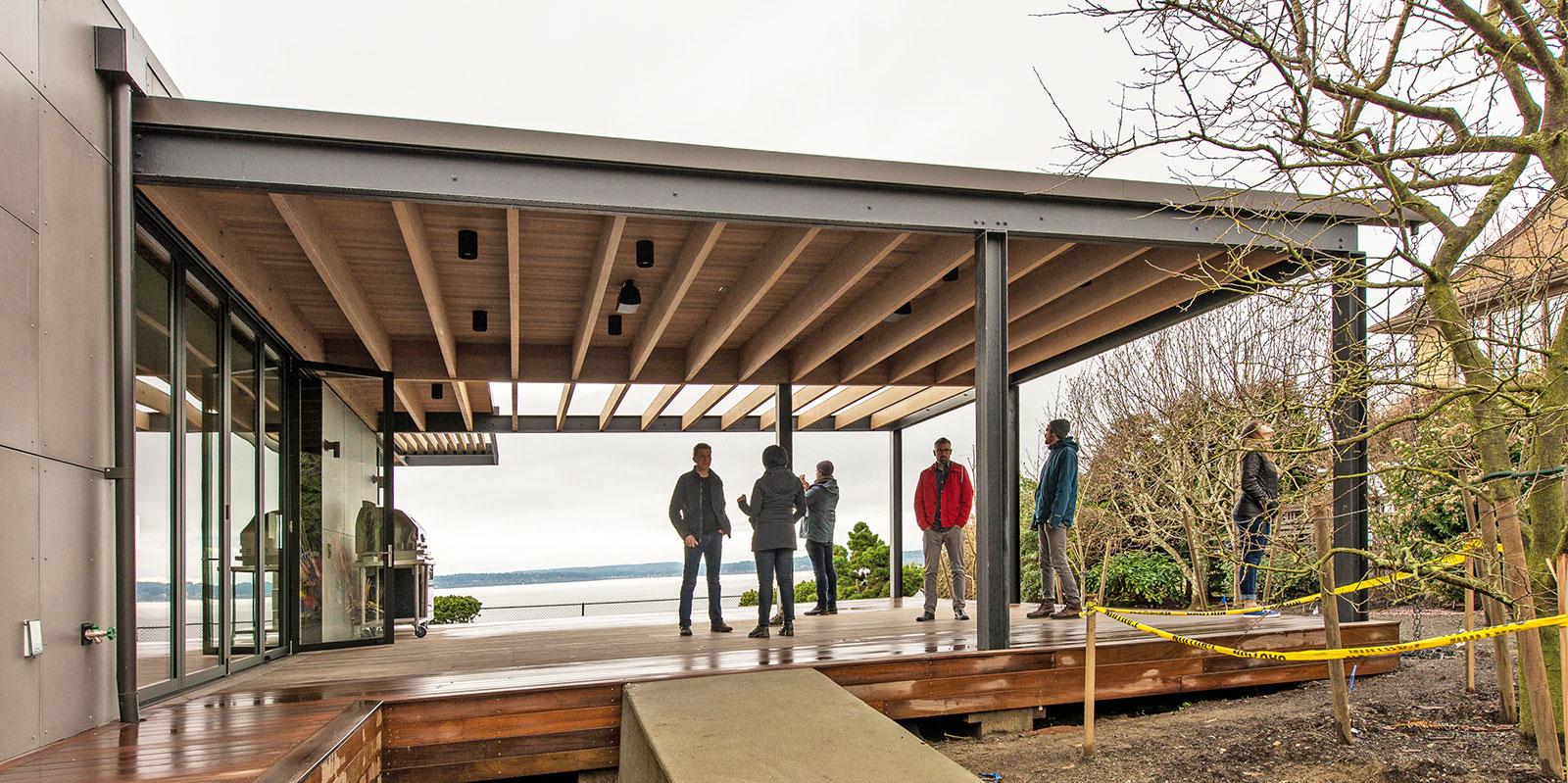
Cheers from Team BUILD





